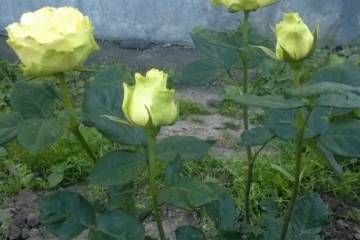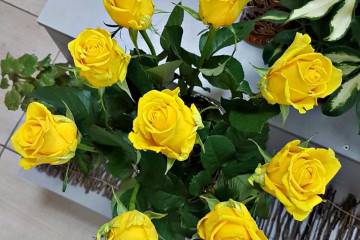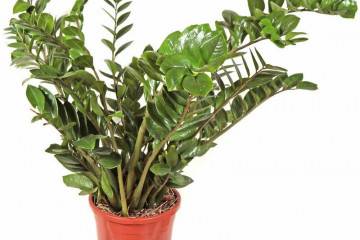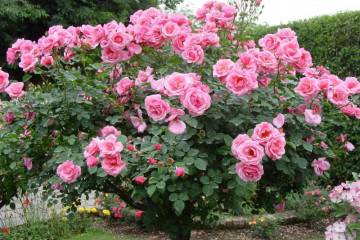Jacaranda violet tree - plant characteristics
Content:
Jacaranda, or the violet tree, is a very spectacular plant that makes you fall in love at first sight. It can be grown both in the garden and on the windowsill. Despite the fact that in "captivity" the violet tree blooms extremely rarely, gardeners love jacaranda for the unusualness of its feathery leaf plates.
What jacaranda looks like
Jacaranda is a tree plant belonging to the Bignonium family.
Description of the species, what is its uniqueness
Jacaranda violet tree has the following characteristics:
- the trunk is straight and smooth with a gray bark, on young shoots the bark has a reddish tint;
- crown - spreading, very wide;
- leaf plates - large, with a complex shape, outwardly resembling a fern, with multiple feathers, leaf length from 40 to 50 cm;
- flowers are tubular, their diameter is about 3 cm, length is up to 5 cm, color is purple with a lilac tint.
The homeland of the plant is the tropical and subtropical regions of America. Found in Brazil, Argentina, Mexico. Therefore, in Russia, it is impossible to grow jacaranda on the street. It is cultivated as a potted houseplant.
There are over 50 species of violet tree, but only 2 of them can grow indoors. It is a mimosoliferous and fluffy (jasmine) jacaranda.
Jacaranda or jacaranda - how to do it right
The Latin name is Jacaranda, and in Russia it is called jacaranda or jacaranda. Both options are correct.
Features of caring for a violet tree
Jacaranda mimosa is quite easy to care for, it is not difficult to grow it. Since Mimosifolia is a heat-loving plant, for a comfortable existence the tree needs a temperature of +20 to +25 degrees in the summer, in winter the indicators should not exceed + 15-18. In winter, it is recommended to take the tree out to balconies or loggias.
Lighting should be diffused, without direct sunlight. You should not put a pot with a tree on a south-facing window in the summer.
Watering and feeding
Water the jacaranda in moderation but regularly. The higher the ambient temperature, the more often you water. It is impossible to transfuse the plant, the decay of the root system may begin. The top layer of the earth should dry out between waterings. During dormancy, it is enough to water the flower once a month.
When growing jacaranda, you can use a purchased substrate or made yourself. To get the most nutritious soil, it is necessary to mix in equal parts:
- humus;
- river washed sand;
- sod land;
- add some chopped charcoal.
It is recommended to use phosphorus and superphosphate to feed the flower. Jacaranda also likes such organic substances as peat, bird droppings, humus. It should be fed once every two weeks. No fertilization is required during the dormant period.
Growing at home
It is not difficult to grow this magnificent plant, you just need to follow the simple recommendations and rules of agricultural technology exactly.
Growing from seeds
Step-by-step actions:
- Prepare the seeds by soaking them in warm water for several hours or wrapping them in damp cotton wool.
- Plant them in fertile soil to a depth of no more than 1 cm. A separate container is taken for each seed.
- Water, cover the pots with plastic wrap to create a greenhouse effect. The film must be removed daily for 20-30 minutes to ventilate the soil.
- Keep at temperatures from +22 to +25.
The seed substrate can be purchased ready-made, intended for flowering plants, or you can make it yourself by mixing humus, peat, turf and sand in equal amounts. The first shoots will start to appear in about 2 weeks.
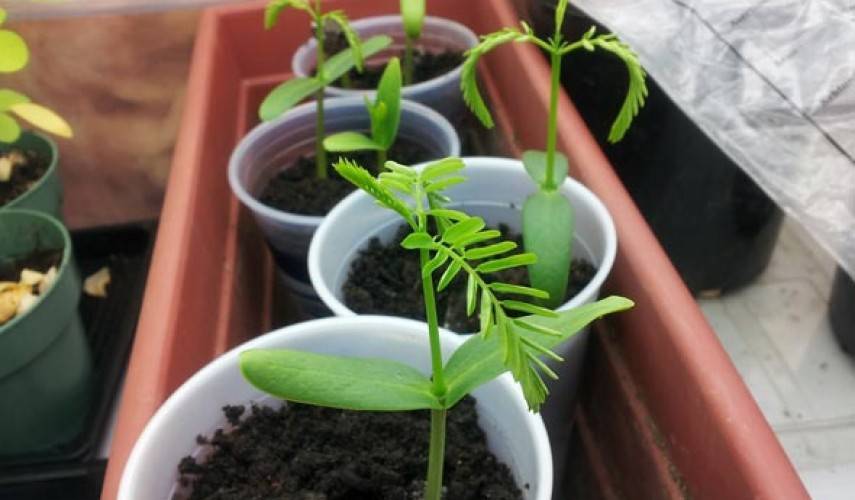
Seedlings can be transplanted into permanent containers no earlier than a month later, when they get a little stronger
Propagation by cuttings
Cuttings are prepared in summer. Branches that are half-stiff are used as planting material. It is necessary to remove the lower leaf plates from the cuttings, treat the cuts with a growth stimulator.
Rooting occurs at a soil temperature of +25. A stalk 8 cm long or more is deepened into the ground at an angle. The container with the planting material is covered with a film.
When and how it blooms
Indoors, waiting for flowers that look like violets is quite problematic. If the plant has not bloomed within 7 years after planting, you can not wait for the appearance of buds on it in the future. If the jacaranda blooms, then its beauty can be admired for 2 months. Her inflorescences are large, consist of 50 flowers. Their shade is lilac with a lilac tint. The flowers are serrated, slightly lowered and slightly curved.
The violet tree blooms 2 times a year - in autumn and spring.
Growing difficulties
Growing a tree plant is not difficult. But in the absence of proper care, the plant can become sick. For example, with systematic transfusion, root rot is possible.
Chlorosis of the leaves can appear due to:
- excess lime in the soil;
- lack of mineral elements;
- insufficient watering.
The disease is manifested by slow growth and yellowing of the leaf plates. Treatment - transplantation into nutrient soil, fertilization.
From pests on jacaranda may appear:
- spider mites. This usually happens in a dry room. The tree should be treated with insectoacaricides. Preventive measures - adherence to the required humidity level and regular spraying;
- whitefly. A sign of damage is twisted and yellow leaves. For treatment, insecticides are used.
Can jacaranda mimosa be used for bonsai
To make bonsai from jacaranda, it must be properly cut:
- The first year of growth - pruning is prohibited.
- The second year - the shoots are shortened by no more than 10 cm.
- After the appearance of lateral branches, pinching is carried out, the crown and leaf plates are trimmed.
- You can form the desired crown by tying the branches with wire.
Traditions and beliefs associated with jacaranda
Jacaranda is a plant that has been endowed with magical properties.There is an opinion that the presence of a tree in the room helps to cleanse the aura and energy of the household.
A number of African tribes believe that the Blue Spirit lives in the crown, which helps to make the right decisions in difficult situations. For some peoples, jacaranda is a talisman for babies.
In the historical homeland of the violet tree, a decoction is prepared from inflorescences and fruits, which is used in the treatment of intestinal disorders.
Jacaranda or jacarand is a unique plant that bewitches with its flowering of incredible beauty and tenderness. The tree is grown indoors, where it blooms quite rarely. But if you make an effort and create maximum comfort for him, the likelihood of the appearance of lilac buds will increase significantly.




